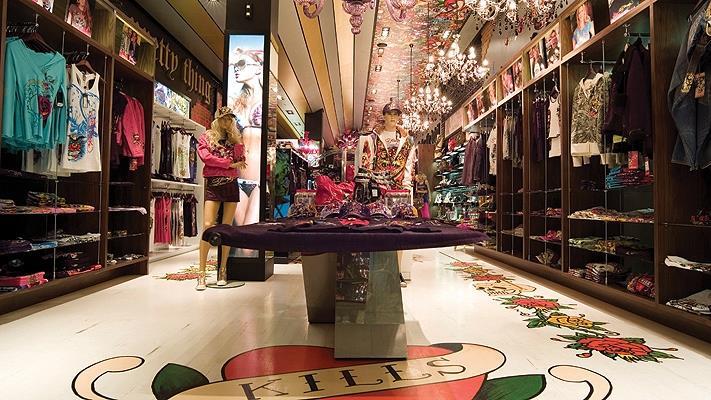BLAST FROM THE PAST: Ed Hardy (the artist and downfall of the brand)
When I started thinking about what trends defined the 1990's, I immediately thought of Ed Hardy. The history of how it all got started is a tale of what happens when you hand over your namesake to someone who's only motivation is to schmooze with celebs and to make as much money as possible with no regard to the actual artist. The Ed Hardy brand rose to popularity as quickly as it went down in flames.
Don Ed Hardy is an artist who was born in Iowa but grew up in southern California. As a teen he was fascinated with tattoos as an art form. After graduating from high school, Ed attended the San Francisco Institute or Art, where he graduated with a BFA. Early in his career as an artist, he was mentored by several well known tattoo artists including Samuel Steward (aka Prof Phil Sparrow). He was introduced Sailor Jerry Collins who was well known for his sailor tattoos. In the early 1970's, Ed moved to Japan to study with the classical tattoo master Horihide. He was the first non-Asian allowed to study this art method. The time he spent in Japan greatly influenced his style and technique.
Around 1980-1981, Ed and his wife formed a publishing company, Hardy Marks Publication. They published books about alternative art, including books about tattoo artists. Then in the early 2000s, Ed licensed his name/brand to Ku USA to produce apparel based on his artwork.
The partnership led to the creation of Hardy Way, LLC., which owned the Ed Hardy brand. One of the most famous licensee for the Ed Hardy brand was French designer Christian Audigier, who had worked with Guess, Levi's, Diesel and Von Dutch. Audigier managed to secure the worldwide licensing rights to the Ed Hardy brand. Audigier saw the potential to elevate Ed Hardy from subculture street wear to celebrity status. He slapped Ed Hardy artwork on anything you can think of - tshirts, shoes, jeans, perfume, lighters, towels, wine, kids clothes, pet attire - literally anything! Audigier also opened Ed Hardy stores around the world.
The Ed Hardy brand grew to $700 million in gross revenue by 2010. However, 2 years later the brand quickly fell out of favor and most of the stores closed. Ed Hardy blamed Audigier for the demise of the brand and his marketing decisions which included associating it with TV reality star John Gosselin.
Ed Hardy wanted this brand back and after battling Audigier in the courts, he regained control. But by then the damage to the brand had been done. Consumers no longer wanted anything to do with it. Wearing Ed Hardy meant you were a douche.
In an 2013 interview for CNN, Ed Hardy said, "Morons dehumanized it" when asked about his views on public distaste of the Ed Hardy brand. He maintained that the clothes and imagery were not to blame for the brand’s downfall, but pointed to Audigier’s aggressive love of celebrities, which Hardy said tainted his image and his name".
In 2019, Ed Hardy sold 85% interest to Iconix Brand Group who now owns the trademarks and has managed to give it a little bit of a second life in Europe.
Today, the 78 year old Ed Hardy and his wife divide their time between Honolulu and San Francisco staying busy with Hardy Marks Publication. Ed occasionally lecturers at museums and universities. He does have a tattoo studio and mentors aspiring tattoo artists.
In case you're wondering, Christian Audigier passed away in 2015 at the age of 57 from blood cancer.
BTW: I never got into Ed Hardy or wore the stuff. I wasn't my style. But I did see a ton of people wearing it. I bet those old Ed Hardy tshirts are now being used as cleaning rags.
Sources: Hardy Marks Publications; CNN; Ranker. Photo: Hardy Marks Publications; Ew.com; NSS Magazine

.jpg)




Comments
Post a Comment